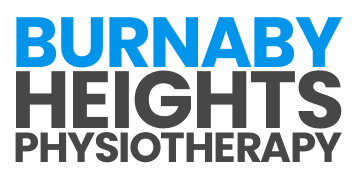At Burnaby Heights Physiotherapy, we specialize in advanced sesamoiditis treatment in Burnaby. Our customized plans aim to reduce your pain, restore foot health, and target the root cause for lasting relief. We prioritize personalized physiotherapy for your comfort and recovery.
Understanding Sesamoiditis
Sesamoiditis is an inflammation of the sesamoid bones, small bones embedded within the tendons beneath the big toe, along with the surrounding tissues. Often resulting from repetitive stress or acute injury, sesamoiditis is common among athletes, dancers, and individuals who frequently engage in activities that put pressure on the forefeet.
Symptoms and Their Impact
Individuals with sesamoiditis may experience:
- Pain under the Big Toe: Especially when walking or engaging in physical activity.
- Swelling and Bruising: Visible signs of inflammation around the affected area.
- Difficulty Walking: Pain that worsens with foot movement can lead to a limp or altered gait.
- Sensation of Footwear Discomfort: Increased pain when wearing certain types of shoes that pressure the forefoot.
Causes of Sesamoiditis
Sesamoiditis typically develops due to factors such as:
- Overuse: Repetitive activities that put strain on the sesamoids and surrounding tendons.
- Sudden Increase in Activity: A rapid escalation in physical activity without adequate conditioning.
- Foot Structure: High arches or other foot shapes that distribute weight unevenly across the forefoot.
- Impact Injury: Direct trauma to the sesamoid bones from a fall or blow to the foot.
Physiotherapy-Led Treatment Options
Our approach to sesamoiditis treatment at Burnaby Heights Physiotherapy emphasizes physiotherapy-driven methods:
Initial Assessment
We start with a comprehensive assessment to assess the severity of sesamoiditis and understand its impact on your daily life. This includes a detailed examination of your foot’s structure, gait analysis, and a review of your activity levels and footwear.
Personalized Physiotherapy Plan
Based on the initial assessment, we create a customized treatment plan that may include:
- Pain Management Techniques: Utilizing heat and ice therapy to reduce inflammation and alleviate pain.
- Customized Exercise Programs: Exercises aimed at strengthening the foot muscles, improving flexibility, and reducing stress on the sesamoids.
- Manual Therapy: Hands-on techniques to enhance joint mobility and relieve tension in the affected area.
- Education and Support: Guidance on activity modification, proper footwear selection, and strategies to prevent future occurrences.
Explore Our Full Range of Services
At Burnaby Heights Physiotherapy, we’re equipped to address a wide variety of foot conditions beyond sesamoiditis. Our comprehensive care approach ensures we meet all your foot health needs, supporting you in achieving overall well-being and optimal physical performance.
- Physiotherapist
- Acupuncture
- Massage Therapy
- Hand Therapy
- Intramuscular Stimulation Therapy
- Shockwave Therapy
- Concussion Treatment
- Vestibular Physiotherapy
Choose Burnaby Heights Physiotherapy for Effective Sesamoiditis Care
Selecting Burnaby Heights Physiotherapy for your sesamoiditis treatment in Burnaby means trusting a team dedicated to excellence in physiotherapy care. Our team of experienced healthcare providers is here to guide you through every step of your recovery journey, offering effective, evidence-based treatments tailored to your unique needs.
Your Journey to Optimal Foot Mobility Begins Now
Get started on your path to recovery with Burnaby Heights Physiotherapy. Reach out today to learn more about our sesamoiditis treatment options in Burnaby and how we can help you achieve relief and restore function to your feet.
Don’t Let These Foot Conditions Keep You Down
|
|
Sesamoiditis Treatment Burnaby FAQs
Can Sesamoiditis Go Away on Its Own?
While sesamoiditis symptoms can sometimes improve with rest and self-care measures such as icing, the condition often requires more targeted treatment to fully resolve, especially in cases related to biomechanical issues or chronic overuse. Without proper treatment, sesamoiditis can become a persistent problem, leading to chronic pain and potential complications. Engaging in physiotherapy and following a treatment plan tailored to your specific needs can significantly enhance the recovery process and prevent recurrence.
What Activities Should I Avoid If I Have Sesamoiditis?
If you’re experiencing sesamoiditis, it’s wise to avoid activities that place excessive pressure on the balls of your feet, which can exacerbate pain and inflammation. These activities typically include running, jumping, ballet dancing, and certain forms of exercise that involve repetitive foot impact. It doesn’t mean you must completely halt all physical activities, but modifying your exercise regimen to include low-impact options such as swimming, cycling, or elliptical training can help alleviate stress on your feet while keeping you active.
How Long Does It Take to Recover From Sesamoiditis with Physiotherapy?
Recovery time from sesamoiditis with physiotherapy varies depending on several factors, including the severity of the condition, how long you’ve had symptoms before starting treatment, and your adherence to the treatment plan. Generally, individuals may start to experience relief within a few weeks of consistent physiotherapy. However, complete recovery and return to full, pain-free activity levels can take several months. Following your physiotherapist’s recommendations closely, including any modifications to your activities or footwear, is crucial for a successful recovery.
Will Wearing Different Shoes Help with Sesamoiditis?
Yes, wearing the right type of shoes can significantly help manage and alleviate sesamoiditis symptoms. Shoes with a low heel, soft soles, and a wide toe box can reduce pressure on the sesamoid bones and provide the necessary support and cushioning your feet need. Additionally, shoes designed for running or walking that feature proper arch support can help distribute weight more evenly across your foot, lessening the strain on the sesamoid area. Avoiding high heels and tight-fitting shoes is crucial, as these can exacerbate the condition by placing additional stress on the forefoot.
Burnaby Heights Physiotherapy
3970 Hastings St #210, Burnaby, BC V5C 6C1, Canada
604 – 294 – 3911
Hours:
Monday to Friday: 7:00 AM – 8 PM
Saturday: 7:00 AM – 2:00 PM
Sunday: Closed


